
- Home
- Photography Tours
- Diary / Blog
- Galleries
- Foreign Trips
- Tasmania 2016
- NE Queensland 2016
- Western Alps 2016
- NE Spain 2016
- Australia's Wet Tropics 2015
- Australia's Top End 2015
- SW Australia 2015
- Switzerland 2015
- Andalucia 2015
- Belize 2015
- Australia 2014
- Switzerland 2014
- Belize 2014
- Bahama Islands 2014
- Switzerland 2013
- Ecuador 2012-2013
- Florida 2011-2012
- Vancouver Island 2011
- Australia 2010
- Peru 2008
- Bulgaria 2007
- Lesvos 2006
- California 2006
- New Zealand 2005
- Extremadura 2005
- Goa, India 2004
- The Gambia 2003
- About
February 2017
Alistair Reid Snake Venom Research Unit
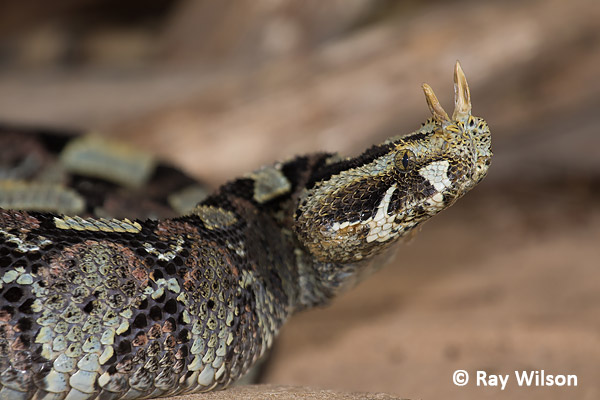
Rhinoceros Viper (Bitis nasicornis)
I had the rare privilege this month to be invited on a visit to the Alistair Reid Venom Research Unit (ARVRU) at the Liverpool School of Tropical Medicine to photograph several of the vemonous snakes contained within their collection. The research at the ARVRU focuses on several aspects of snake venom, such as the characterisation and study of the variation of the toxic components of the venom; studying the mechanisms of how snakes protect themselves from the toxic components of their own venom; and how the snake venom system has evolved.
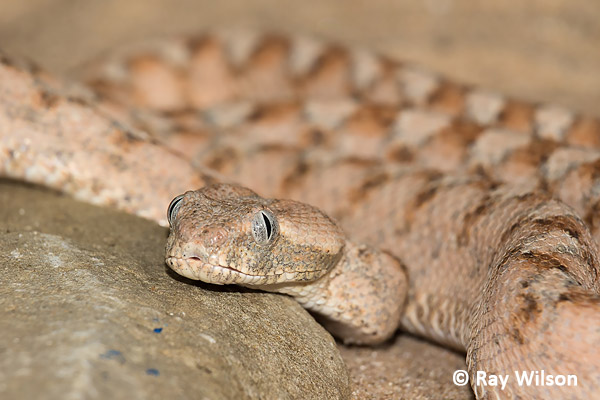
Painted Saw-scaled Viper (Echis coloratus)
There is much debate over which is the deadliest snake in the world and there are several candidates depending on how you want to define what is meant by "deadliest". As far as drop for drop potency of the venom goes the hands down winner is the Inland Taipan (Oxyuranus microlepidotus) of Australia who can deliver enough venom in a single bite to kill 200,000 mice! This is double the dose of its nearest rival and close relative, the Taipan (O. scutellatus), and more than 75x that of the infamous Eastern Diamond-backed Rattlesnake (Crotalus adamanteus) of North America.
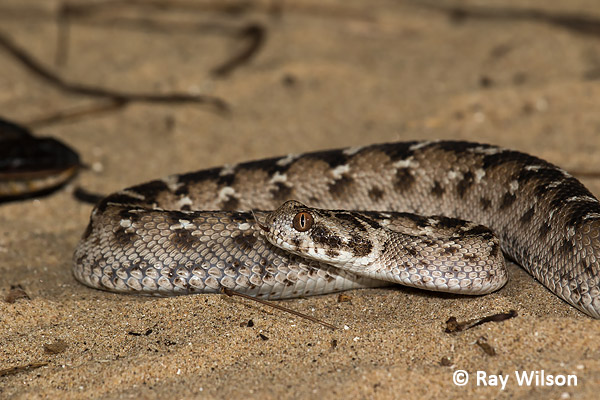
Egyptian Saw-scaled Viper (Echis pyramidum)
Of course, toxicity with regards to the ability to kill a tonne of mice does not necessarily equate to how deadly it is to humans, and if your definition of what constitutes "the deadliest snake" is the speed with which the venom kills you then two of the strongest candidates would probably be the Black Mamba (Dendroaspis polylepis) or the King Cobra (Ophiophagus hannah). A bite from either of these species can potentially put your life in jeopardy in a matter of minutes, depending on how much of a venom dose is injected.
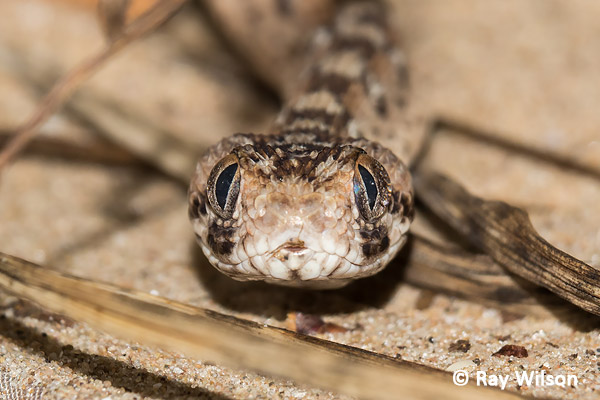
Ocellated Saw-scaled Viper (Echis ocellatus)
A final, and arguably the most relevant, consideration to take into account when trying to determine which is the deadliest snake is which species is responsible for the highest number of human deaths. This is difficult to ascertain definitively, since most deaths through snakebite occur in the poorest areas of the world and a large proportion of cases are not reported, but a strong candidate in this category is the Indian Saw-scaled Viper (Echis carinatus (below)). This is an extremely aggressive species that bites with little provocation and which has a cryptic colouration that make them difficult to detect. They also have a propensity to live in densely populated urban areas making them far more likely to be encountered by humans than most other deadly snake species.
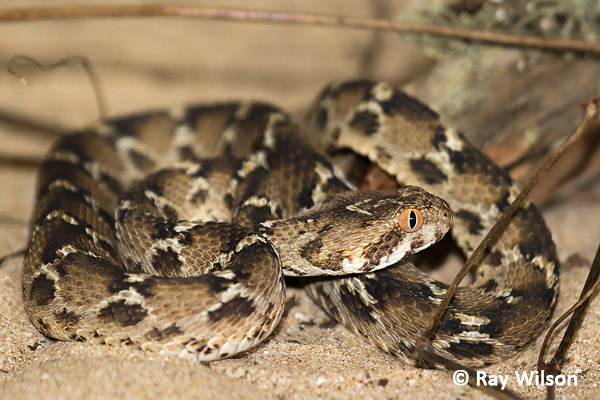
Indian Saw-scaled Viper (Echis carinatus)
E. carinatus is the smallest of India's "Big Four" venomous snakes, only growing up to a maximum length of 65cm, but despite this it also has the fastest strike. It gets its English name from the specialised scales on its body that when rubbed together emit a "sizzling" warning sound which if heard it would be wise not to ignore it!
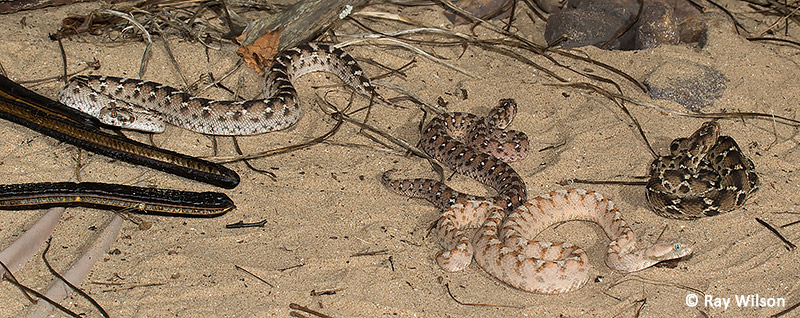
Saw-scaled Vipers (from left to right: Echis pyramidum, E. ocellatus, E. coloratus & E. carinatus)
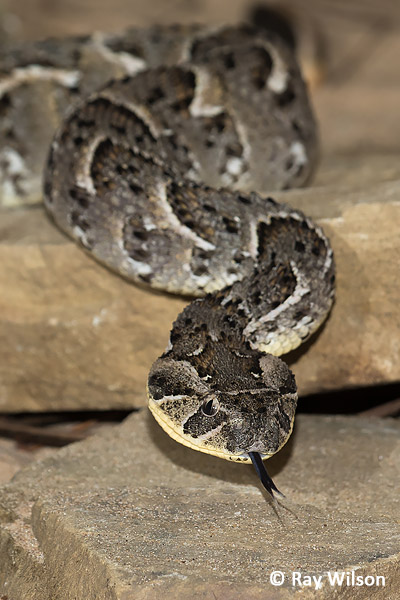
Puff Adder (Bitis arietans)
The Puff Adder is the most widespread venomous snake in Africa and is responsible for around 60% of African snakebites and more human fatalities than any other snake in the continent.
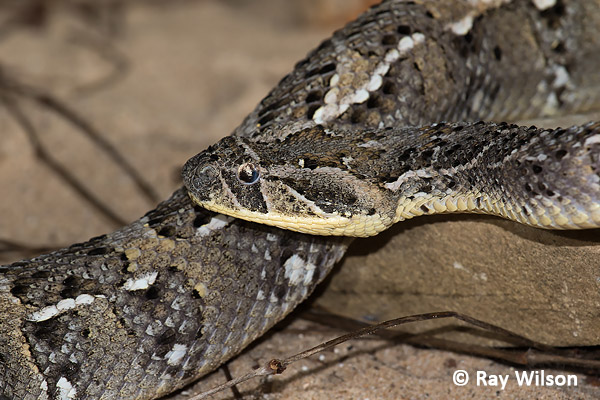
Puff Adder (Bitis arietans)
Most snakes retreat at the approach of a perceived threat but Puff Adders remain still and rely on their camouflage to protect them, resulting in many bites occurring from people accidentally stepping on them. A single bite from a Puff Adder can inject up to 3.5x the lethal human dose of its cytotoxic venom.
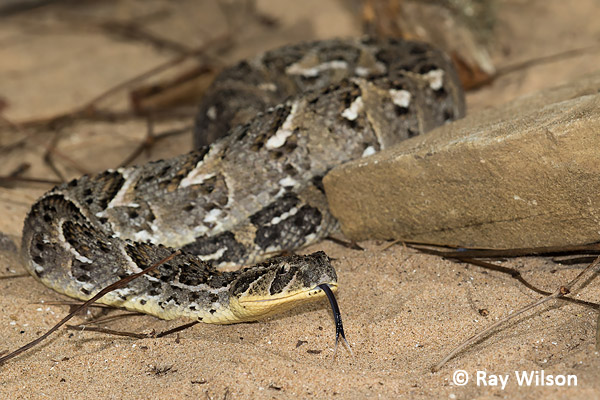
Puff Adder (Bitis arietans)
If Puff Adders are disturbed they will emit a loud hissing noise, form a tight coil and then strike sideways.
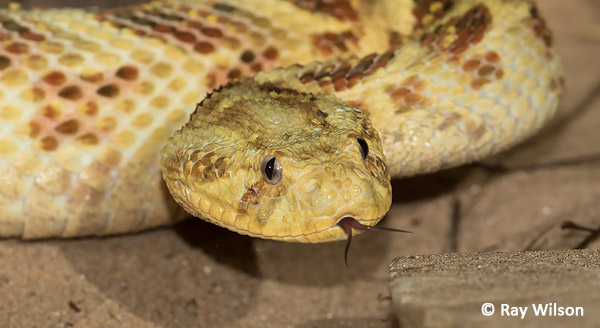
freshly-moulted Puff Adder (Bitis arietans)
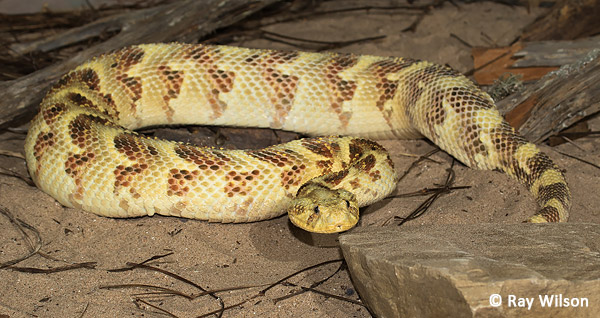
freshly-moulted Puff Adder (Bitis arietans)
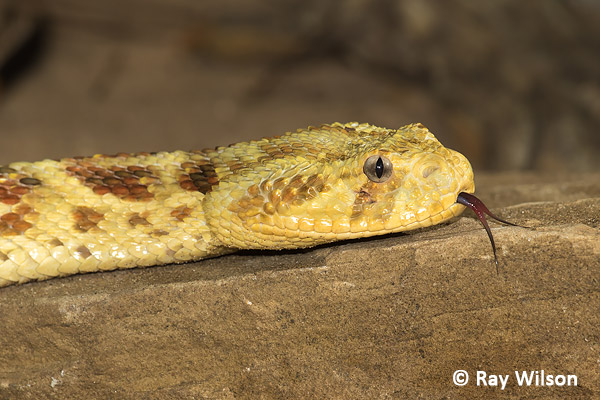
freshly-moulted Puff Adder (Bitis arietans)
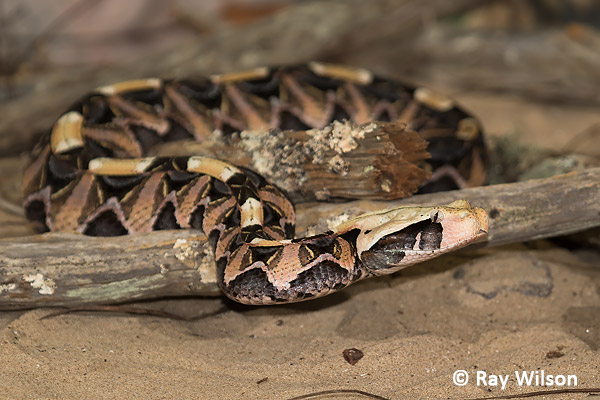
Gaboon Viper (Bitis gabonica)
The beautiful markings of the Gaboon Viper provide perfect camouflage when it is hiding among the leaf litter waiting to ambush its prey. It is the largest viper in the world and large individuals can weigh up to 10kg and grow to over 2m in length. At up to 50mm in length, it also has the longest fangs of any snake in the world.
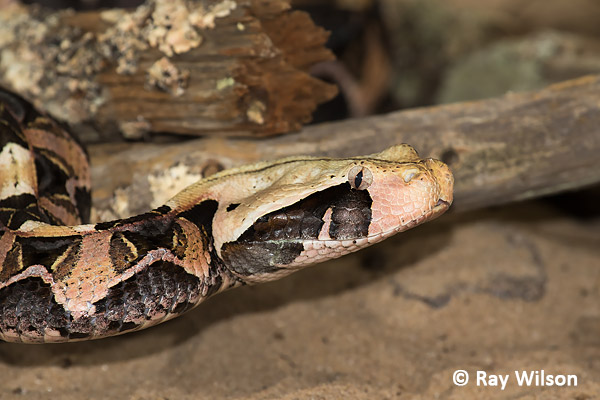
Gaboon Viper (Bitis gabonica)
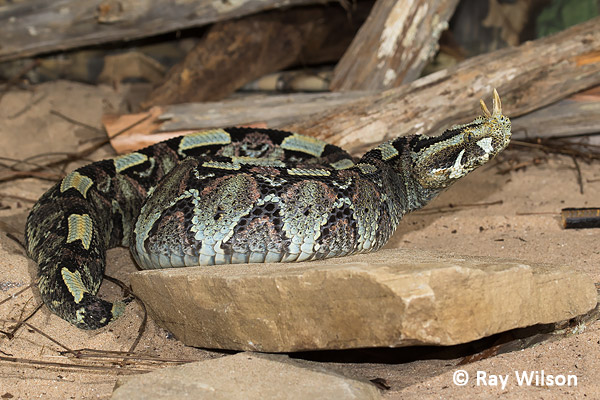
Rhinoceros Viper (Bitis nasicornis)
Similar to the Gaboon Viper, the Rhinoceros Viper is an ambush predator that relies on its cryptic coloration to camouflage it among the leaf litter of its rainforest habitats in tropical Africa. The venom of this particular species is relatively weak when compared to other Bitis species. "Relatively weak" in this context, however, is still extremely potent in the grand scheme of things and all it means is that severe tissue damage is more likely to occur than death!
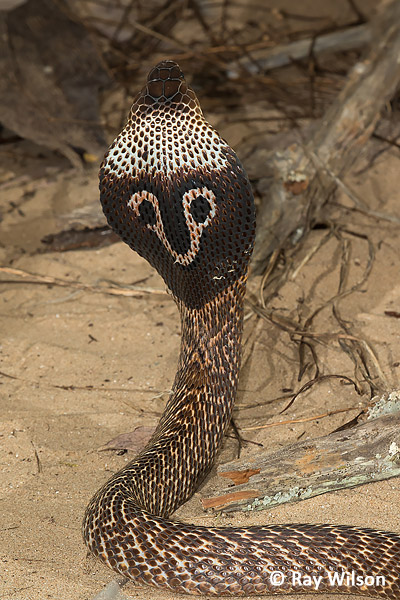 |
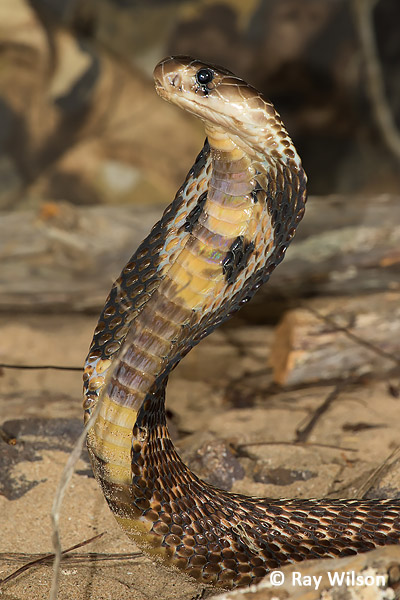 |
Spectacled Cobra (Naja naja)
The Spectacled Cobra is an iconic Indian species that is favoured by snake charmer and is one of the "big four" most dangerous snakes in India. The highly neurotoxic venom of the Spectacled Cobra is fast acting and symptoms present themselves within half an hour, starting with swelling around the bite site. As the toxic effects of the venom take hold, the limbs become weak and uncontrollable sweating, dribbling and vomiting ensue. If left untreated the victim will die of respiratory muscle paralysis within a couple of hours in about 20-30% of cases. This mortality rate may seem a bit low for such a highly venomous species but, like many other snakes, the Spectacled Cobra rarely delivers a full dose of venom during a defensive strike.
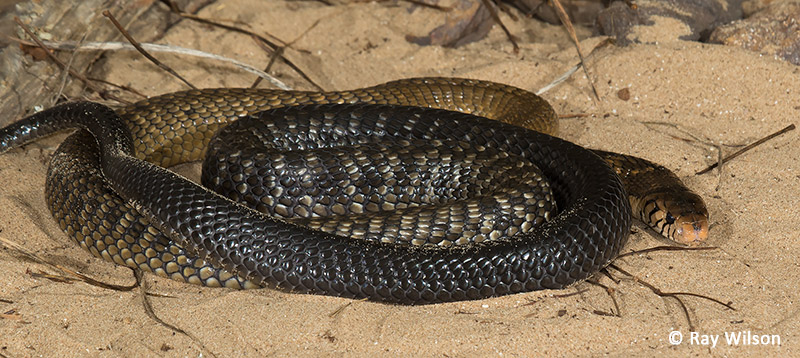
Monocled Cobra (Naja kaouthia)
The closely related Monocled Cobra was formerly thought to be a southeast Asian subspecies of the Spectacled Cobra but is now regarded as a species in its own right. It is easily identified by the circular marking on the back of its hood from which it derives its English name.
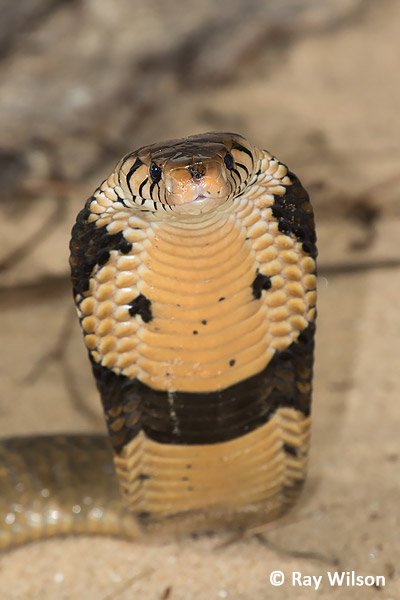 |
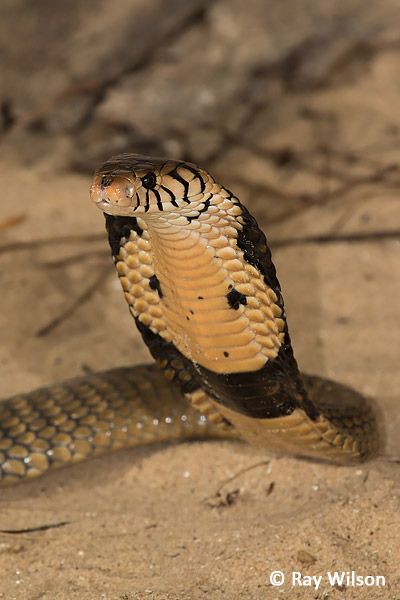 |
Monocled Cobra (Naja kaouthia)
The highly toxic venom of the Monocled Cobra is considered to be one of the fastest acting snake venoms in the world and fatalities can occur in less than an hour after receiving a bite. This, coupled with an aggressive temperament and a tendency to deliver a bite on the first defensive strike, make this the deadliest snake in Thailand.
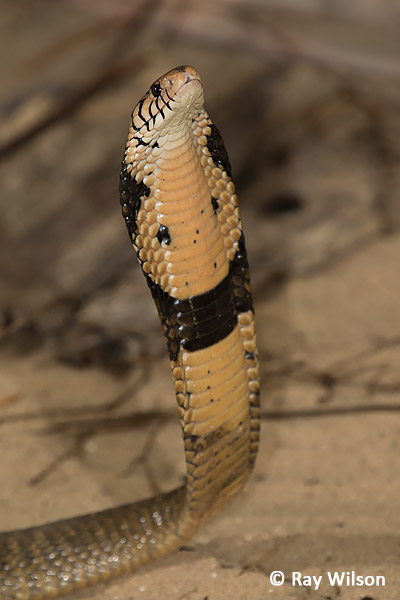
Monocled Cobra (Naja kaouthia)
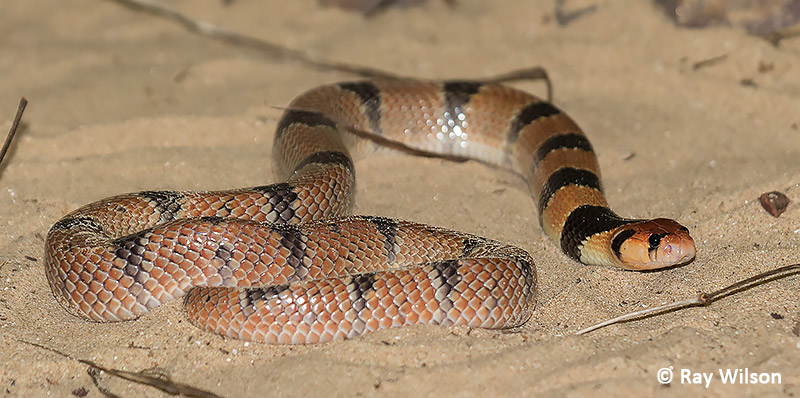
Cape Coral Snake (Aspidelaps lubricus)
The Cape Coral Snake is a nocturnal cobra of arid rocky or sandy habitats in Southern Africa.
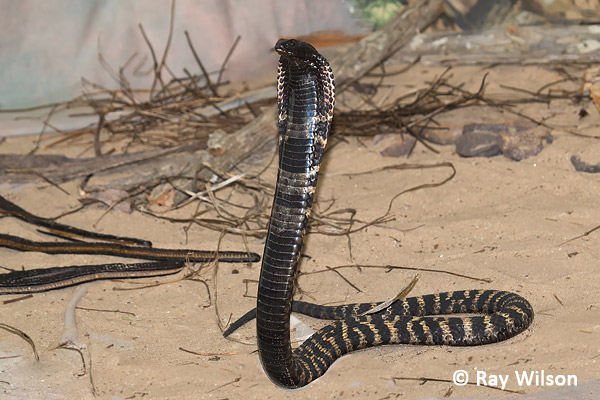
Rinkhals (Hemachatus haemachatus)
The Rinkhals is a spitting cobra that is found throughout most of South Africa. To enable it to spit venom, the discharge hole in the hollow fangs faces the front at a 90°-angle rather than facing down as it does in snakes that inject their venom through biting. With this modification they can accurately spit venom to a range of about 2m and usually aim for the eyes of their victim. The Rinkhals' venom glands have the capacity to contain about 2x the lethal dose of its primarily neurotoxic venom but the chance of human fatality from this snake is pretty low due to it delivering the venom by spitting rather than directly through a bite. The consequences of receiving a direct hit to the eyes, however, can be severe and may cause permanent blindness if the venom is not thoroughly washed out immediately.
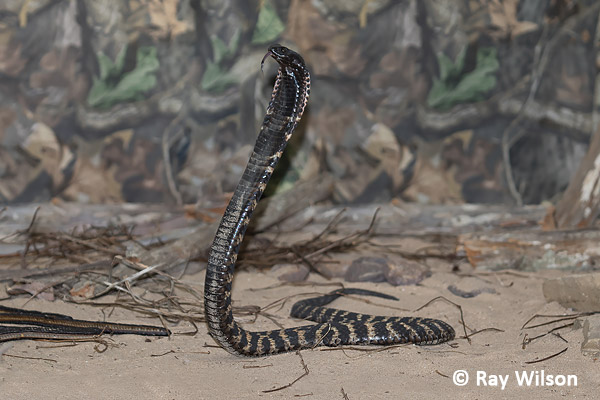
Rinkhals (Hemachatus haemachatus)
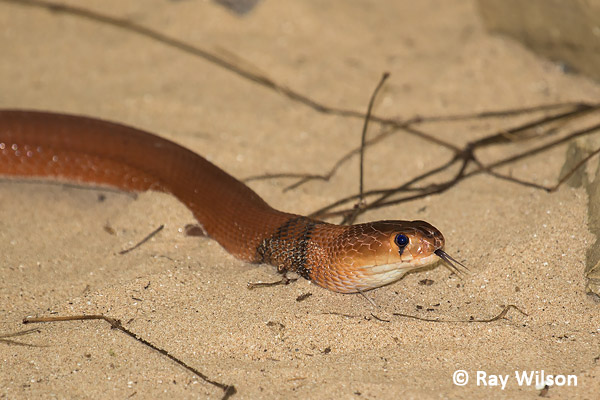
Red Spitting Cobra (Naja pallida)
The Red Spitting Cobra is an East African species that inhabits dry savanna and semi-desert habitats from Egypt to Northern Kenya. Similar to the Rinkhals, fatalities from Red Spitting Cobras are rare but permanent blindness from a direct hit to the eyes is a real possibility.
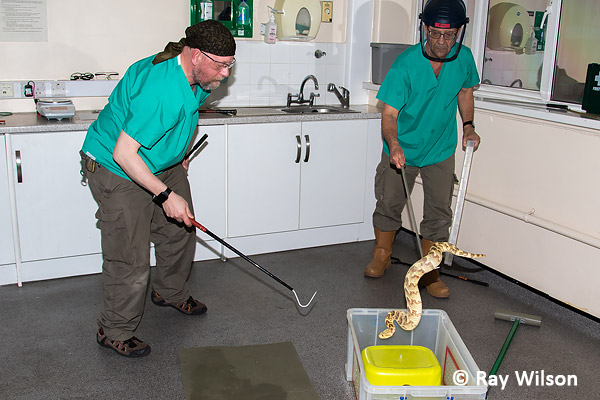
Removing a Puff Adder from its cage
Since most of the research performed at the ARVRU requires copious amounts of venom, the snakes that are kept in the herpetarium are regularly "milked" (a term that is in common usage but not favoured by research professionals as it's an inaccurate description of forced envenomation). Here Dr. Rob Harrison and chief herpetarium technician Paul Rowley demonstrate how to safely remove a Puff Adder from its cage and then immobilise it for venom extraction.
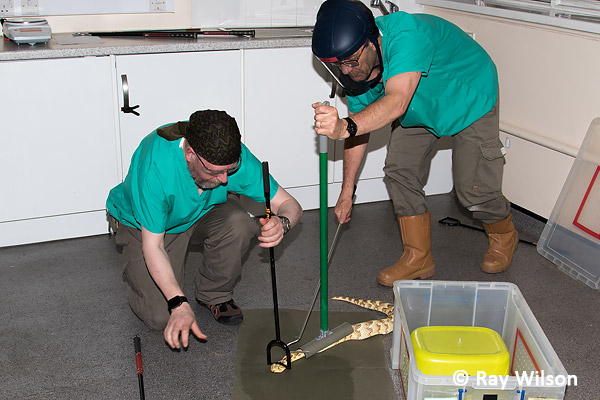
Safely immobilizing the Puff Adder without harming it
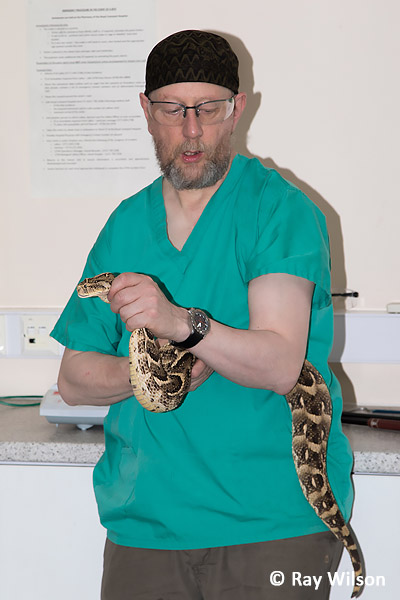
Paul Rowley with the Puff Adder safely immobilized and ready for venom extraction
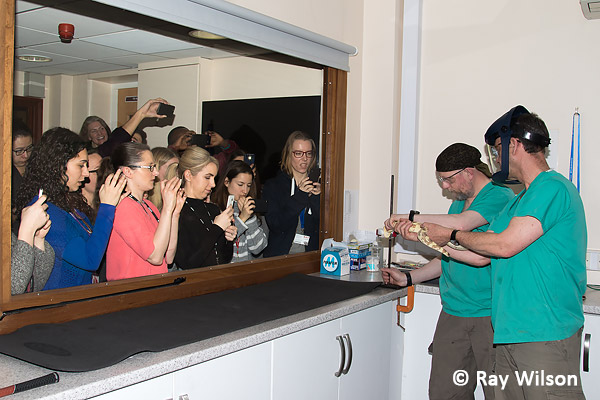
Demonstration of venom extraction from a Puff Adder to LSTM staff
Once the snake is safely immobilised, the snake is forced to bite through a membrane covered jar to deliver the venom to the waiting container. The venom can clearly be seen as a yellow fluid in the photo below.
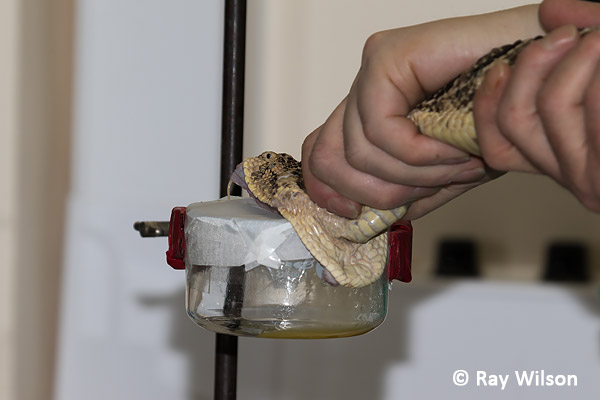
Paul Rowley with the Puff Adder safely immobilized and ready for venom extraction
After the venom extraction demonstration, the LSTM staff members were taken on a tour of the herpetarium, which contains one of the largest collections of medically-significant snakes in the world.

LSTM staff member photographing a Green Mamba during a tour of the herpetarium
I had been hoping to get some proper photographs of the Green Mambas but since the Mambas in the collection are notoriously difficult to get to settle on a branch, we didn't have enough time in the end and I had to settle for a more reportage-type of shot instead (see above).
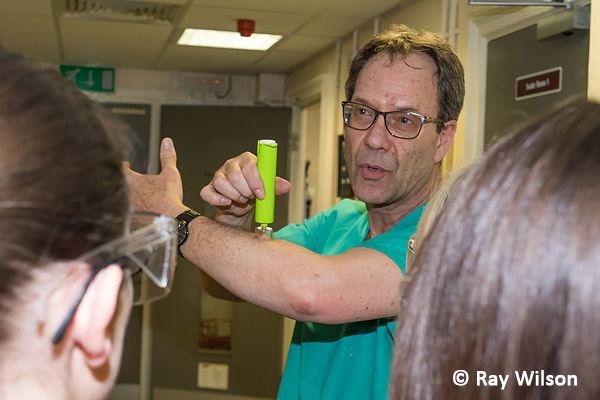
Dr. Rob Harrison explaining why venom suction extractors are neither safe nor effective
If you are unlucky enough to be bitten by a venomous snake the advice from the experts is to remain as immobile as possible and phone for help so that anti-venom can be administored as quickly as possible by a medical professional.
Use of tourniquets supplied in snake bite first aid kits or venom suction extractors should not be used as they can actually make the effects of snake venom worse. Tourniquets cut off the oxygen supply to the inflicted area and exacerbate the necrotic effects of many snake venoms while suction devices often caused circular necrotic lesions where the device had been applied that greatly extended the length of time required for the healing process (click here to read an interesting short review of the scientific studies examining their lack of effectiveness).
Another commercial product that should be avoided are "Snake Gaiters". These are supposed to offer protection from bites to your lower legs, but are about as much use as a chocolate teapot. In another demonstration by Rob, he showed just how easily snake fangs could penetrate the material of the gaiters. The ineffectiveness of the material in stopping fang penetration can actually lead to an increase in the likelihood of being bitten since the wearer often has a false sense of security and will take risks that they may have otherwise avoided.
Ray Wilson owns the copyright of all images on this site.
They may not be used or copied in any form without prior written permission.
raywilsonphotography@googlemail.com